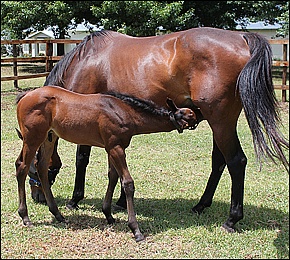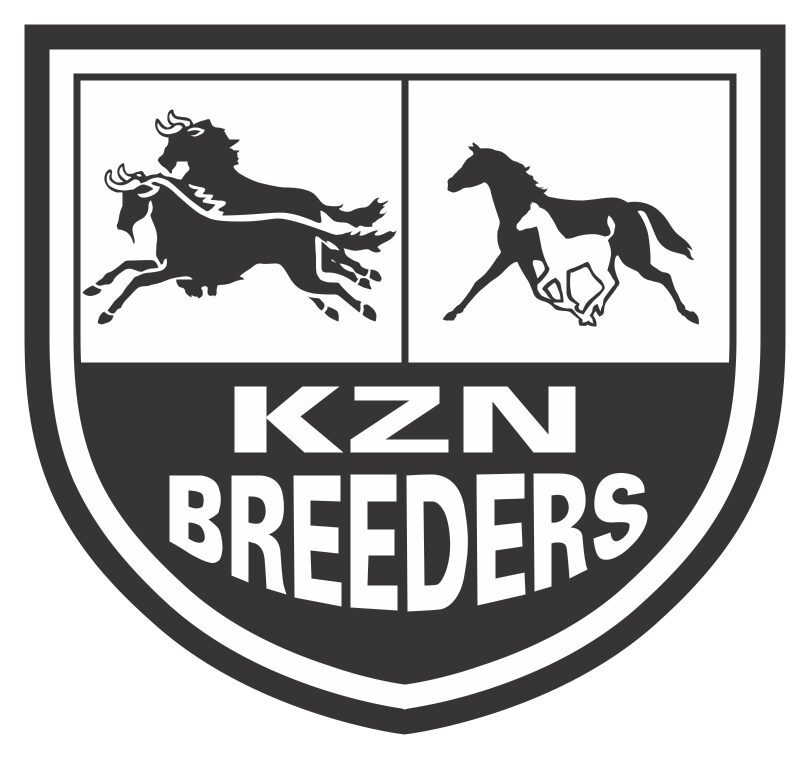Nutrition of Mares Influences Milk Characteristics and Development of Foals
| Nutrition of Mares Influences Milk Characteristics and Development of Foals 14 February, 2012 – Dr Rensia Möller |
 The nutrition of the mare affects growth and development of the foal both in the uterus and via milk production. In foals, these effects carry over for a year or more.
The nutrition of the mare affects growth and development of the foal both in the uterus and via milk production. In foals, these effects carry over for a year or more.
In one study, 15 one-day-old foals fed milk replacer for seven weeks were compared with foals that nursed on their dams. During the first two weeks, replacer-fed foals did not gain weight as rapidly as mare-nursed foals. The resulting insulin-like growth factor 1 (IGF-1; a hormone that plays an important role in growth) values for replacer-fed foals were lower than values for mare-nursed foals. After the first two weeks, gains were similar between the two groups; however, serum IGF-1 concentrations of replacer-fed foals were only 36% and 60% of values obtained for mare-nursed foals at eight weeks and four and a half months of age, respectively.
The differences between mare-nursed and replacer-fed foals in serum IGF-1 concentrations persisted to one year of age, when the serum IGF-1 concentration of mare-nursed foals was 48% higher than that of replacer-fed foals.
Broodmare nutrition requirements:
Lactation energy demands rank among the highest for horses. Mares can produce 2.3% of their bodyweight or 11.8 kg of milk per day during the first month of lactation. Researchers have determined milk yield in Quarter Horse mares for early lactation (2-29 days) and late lactation (60-120 days).
Daily milk production was greater during early lactation compared to mid lactation (12.1 vs. 10.8 kg, respectively) and tended to be greater during mid lactation in multiparous mares (mares that gave birth to more than one foal) compared to primiparous mares (mares that gave birth to one foal) (11.7 vs. 10.4 kg, respectively), but was similar between groups in late lactation.
There are extreme demands for glucose during early lactation that may represent a time when feeds with higher glycaemic responses would benefit the mare and foal (14-16% protein stud feeds which will have a concurrent higher energy level). Foals can begin digesting grain within two weeks of birth, and should therefore be kept out of the dam’s feeding through. It is only at eight weeks old that a functional hindgut can process forage which contributes to the overall nutrition of the foal.
Declines in mare milk production and nutrient concentrations after two months into lactation may represent a time when foals should be given supplemental feed such as a balancer pellet when on good grazing and a 14-16% protein weanling ration if they need to gain weight. However be careful not to overfeed and provoke growth spurts which can later detrimentally influence bone and cartilage development and compromise a potential young athlete due to DOD (developmental orthopaedic deformities).
The effects of dietary carbohydrates and fat on milk composition and fatty acid profile of mare’s milk were reported in another study. The sugar and starch diet (SS) was high in maize and molasses (62.4% NSC) while the fat and fiber diet (FF) was high in corn oil, beet pulp, soy hulls, and oat straw (26.5% NSC). The findings revealed a 4.2-fold increase in IgG (antibody molecule) concentration from the colostrum of mares fed the FF diet versus the mares fed the SS diet 6 to 12 hours post foaling.
The researchers suggested that the 4.2-fold increase in IgG in the colostrum collected 6 to 12 hours post foaling in the previous study was due to the vitamin E content of the corn oil (327 IU/kg). Corn oil is high in omega-6 fatty acids (linoleic acid). Thus, the researchers suggested that higher linoleic acid content of the milk would also protect against gastric ulcers in the foals.
I however suggest oil that is more balanced in omega 3 (linolenic) and omega 6 fatty acids such as canola oil or a commercial blend with a closer omega 6:3 ratio instead of corn oil. The oil then delivers a double effect of high Vit E (which can be enhanced by feeding Alltech’s BioMos) pre-foaling to increase IgG levels in colostrums and enhance foal immunity, and also have prophylaxic effect of development of stomach ulcers in the foal.
All the best
Rensia Möller

 Dr Rensia Möller Dr Rensia MöllerEquine Veterinarian and International Nutritionist Dr Rensia Möller obtained her Agricultural Science before graduating cum laude for her BScAgric Honours in Equine Nutrition and Genetics. She obtained her Masters in Equine Exercise Physiology and Equine Nutrition at the Onderstepoort Veterinary Faculty before completing her Veterinary Science degree at Onderstepoort cum laude. She opened an equine veterinary and nutrition practice in 2002, as well as developing her own equine nutritional supplement brand in South Africa. She was appointed manager of Zabeel Feedmill in Dubai in 2006 where she custom designed professional performance equine feeds for various internationally acclaimed trainers including Mike de Kock, competing for the Dubai World Cup, with numerous race winners and success stories on these feeds. She also exclusively developed formulas for the world renowned Godolphin and Darley equine racing and breeding houses. She is currently on board the dynamic Epol team, doing part-time consultancies for Epol clients, and passionately formulating and upgrading their range e.g. the newly launched long awaited mueslis and the international add-on of the Mike de Kock racing range. She is also available for private client consultancies. |


